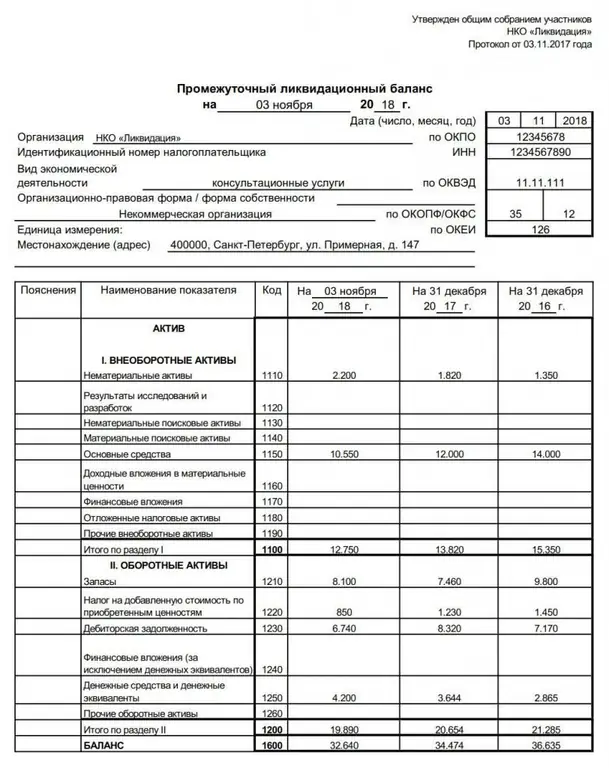2026 Author: Howard Calhoun | [email protected]. Last modified: 2025-01-24 13:10:41
One of the signs of the company's financial stability is solvency. If an enterprise can pay off its short-term obligations at any time with the help of cash resources, it is considered solvent.
This article discusses such concepts as liquidity, the structure of the analytical balance sheet, formulas for quick liquidity ratios, current and absolute liquidity.

Solvency of the enterprise
The main indicator of the company's solvency is the absence of overdue accounts payable and the presence of a sufficient amount of funds on the current account. These conditions will be met if the amount of the firm's liquid assets exceeds the amount of its short-term liabilities at a fixed point in time.
Current solvency is analyzed according to data on financial flows: the receipt of funds should cover the fulfillment of current obligations. Prospective solvency is studied withusing liquidity ratios.
Balance sheet liquidity is the ability of a company to turn its assets into cash to pay off monetary liabilities. The less time required for this operation, the higher the liquidity ratio of such an asset. At the same time, the period of circulation should not exceed the period of fulfillment of the obligation.
The liquidity of an enterprise is a broader concept. It can be defined as the ability of an enterprise, with the help of internal and external sources, to find means of payment in order to pay off its obligations.

Analysis tasks
Analysis of liquidity in the enterprise is carried out to check and adjust the solvency management of the enterprise. When conducting such an analysis, they evaluate:
- liquidity of current assets of the enterprise;
- liquidity of the balance sheet of the company as a whole;
- the solvency of the company at the moment and in the future;
- general company policy aimed at maintaining the necessary solvency;
- development prospects and recommendations to eliminate possible adverse factors.

Asset grouping
To analyze the liquidity of the balance, you need to compare the assets and liabilities of the company. For convenience, it is customary to divide them into several groups, that is, to draw up an analytical balance.
Balance sheet assets are divided into 4 groups depending on the degree of their liquidity.
- Group A1 includes absolutely liquidassets. This category includes financial investments (short-term) and cash. In the balance sheet, these are lines with codes 1240 and 1250.
- Group A2 includes assets, the sale of which may take relatively little time. These include accounts receivable (according to the balance sheet code 1230). Also, in some sources, group A2 includes other current assets. In this group, liquidity depends on the solvency of the company's counterparties, on the forms of payment and the speed of payments.
- Group A3 contains slow-moving assets. This category includes stocks of products and materials, work in progress, VAT. It will take some time to convert their cash. In the balance sheet, group A3 includes lines with codes 1210, 1220 and 1260. Some authors include fixed assets (code 1150) in this category.
- Finally, the most difficult-to-sell assets are included in the A4 group. This is the entire Section I of the balance sheet (code 1100).

Categories of liabilities
All liabilities of the balance are divided into groups depending on the urgency of their repayment:
- The P1 group includes the most urgent obligations, which include short-term accounts payable to employees of the organization, the budget and extra-budgetary funds, contractors and suppliers, etc. (code 1520).
- Group P2 includes short-term liabilities. This category includes short-term loans and borrowings (code 1510), otherobligations (code 1550).
- P3 group includes long-term loans and borrowings (code 1410).
- P4 group includes permanent liabilities, including equity funds (codes 1300, 1530, 1540).

Liquidity ratios
In addition to absolute indicators, relative indicators of the enterprise's solvency are used. There are ratios of absolute, quick and general liquidity.
Let's consider the absolute liquidity ratio. It reflects the share of short-term liabilities that the company can quickly repay at the expense of currently available cash. It is calculated as the ratio of the indicator A1 to the sum of P1 and P2. A high value of this ratio indicates that the company will repay its debts with a high degree of probability.
The next coefficient is the amount of current liquidity. It shows how much a company's short-term liabilities are covered by its current assets. The indicator is calculated as follows: current assets (A3 + A2 + A1) are divided by short-term liabilities (P1 + P2). The higher this indicator, the greater the confidence of creditors that the obligations will be repaid.
Finally, the indicator of quick liquidity is, in fact, an intermediate value. It helps to assess how the firm will pay for its obligations (short-term) in the event that it is not possible to sell reserves.
The given liquidity ratios are calculated not only for the internal purposes of the enterprise, but also for externalusers.

Calculation of quick liquidity
The quick liquidity ratio is calculated as follows: the sum of A1 and A2 is divided by the sum of P1 and P2. That is, we put in the numerator: cash + financial investments (short-term) + receivables. The denominator will be the sum of short-term borrowings, accounts payable and other liabilities.
With the use of the line code for the balance sheet, the formula for the quick liquidity ratio looks like this:
Kbl=p.1250 + p.1240 + p.1230 / p.1550 + p.1520 + p.1510
Calculate the coefficient on the example of the balance sheet of a fictitious company. Unit of measurement - thousand rubles.
| Code | As of December 31, 2016 | As of December 31, 2015 |
| Assets | ||
| 1230 | 2 640 | 1 570 |
| 1240 | 45 | 14 |
| 1250 | 225 | 68 |
| Liabilities | ||
| 1510 | 1 725 | 1 615 |
| 1520 | 3 180 | 1 925 |
| 1550 | 37 | 20 |
According to the balance sheet, the formula for the quick liquidity ratio as of December 31, 2016will look like this:
Kbl=2 640 + 45 + 225 / 1 725 + 3 180 + 37=0, 58.
In the same way, we calculate the indicator as of December 31, 2015:
Kbl=1 570 + 14 + 68 / 1 615 + 1 925 + 20=0, 46.
The calculation shows that the company's quick liquidity has increased.

Normative value
In the economic literature, the value of the quick liquidity ratio is considered to be normal in the range of 0.5-1 and above. However, the indicator may vary depending on the industry and the area where the enterprise operates. So, for retailers, the indicator will be 0.4-0.5.
When analyzing, one should pay attention not only to the overall value of the indicator, but also to the structure of its components. Thus, a significant part of liquid funds may be receivables, which are difficult to collect. In this case, a value above one will be considered the norm of quick liquidity.
Russian legislation contains several normative values. Thus, the Order of the Ministry of Economy of the Russian Federation No. 118 dated October 18, 1997 recommended a quick liquidity rate of one or more with an explanation that at lower values, an enterprise needs to constantly work with debtors to prevent payment delays.
The Decree of the Government of the Russian Federation No. 52 of January 30, 2003 gives the value of the coefficient for agricultural producers - from 1.2 to 1.5.
Risk analysis
The concept of risk is associated with the solvency of an enterpriseliquidity. It reflects the likelihood that the borrowing enterprise will not be able to fulfill its payment obligations in full and on time.
Assessment of liquidity risks is carried out on the basis of the above grouping of assets and liabilities. The risk is higher, the lower the liquidity of assets and the shorter the maturity of existing liabilities. The general table is shown below:
| Asset group | Liability group | Risk |
| A1 | R4 | minimal |
| A2 | P3 | valid |
| A3 | P2 | high |
| A4 | R1 | very high |
This grouping clearly shows the share of liquid assets and liabilities in the overall structure. Next, a comparison is made of the values of assets and liabilities within the same risk group. The resulting ratio shows the type of liquidity and the risk zone in which the company is located
Thus, the balance sheet of an enterprise is considered liquid if the following inequalities are met:
A1≧P1, A2≧P2, A3≧P3, A4≦P4 - it is considered that there are no risks with such ratios.
Liquidity is considered acceptable if the ratio is A1<P1, A2≧P2, A3≧P3, A4~P4. In this case, the risk zone for the enterprise is acceptable.
The ratio A1<P1, A2<P2, A3≧P3, A4~P4 is a sign of impairedliquidity. The risk zone is critical.
Finally, with inequalities A1<P1, A2<P2, A3<P3, A4˃P4 liquidity is considered to be in crisis. The risk zone for the enterprise is catastrophic.
Conclusions
Liquidity reflects the degree of solvency of the enterprise. When conducting an analysis, various methods are used to obtain a more complete and realistic description of the financial condition of the company.
Using the grouping method, they make up an analytical balance.
Using balance sheet data, formulas for quick liquidity ratios, current and absolute liquidity, draw conclusions about the dynamics of changes in asset and liability indicators, the liquidity of balance sheet items, and the compliance of the results with normative and industry average indicators.
It is important to note that when analyzing liquidity, the company's solvency is determined only for the short term (up to 12 months).
Recommended:
Net sales in the balance sheet: string. Sales volume in the balance sheet: how to calculate?

Annually, enterprises prepare financial statements. According to the data from the balance sheet and income statement, you can determine the effectiveness of the organization, as well as calculate the main planned indicators. Provided that the management and finance department understand the meaning of terms such as profit, revenue and sales in the balance sheet
What is liquidity? Liquidity ratio: balance sheet formula

Liquidity is a central concept when analyzing the financial condition of a company. It has its own calculation methodology and standards for comparison. In the framework of this article, we will consider the main points on the analysis of the company's liquidity ratios
General concepts of the balance sheet: assets, liabilities, balance sheet currency

The balance sheet contains important information for assessing the company's financial results. Each section of the asset, liability, as well as the balance sheet currency is necessary to calculate many financial indicators
Formula of net assets on the balance sheet. How to calculate net assets on a balance sheet: formula. Calculation of net assets of LLC: formula

Net assets are one of the key indicators of the financial and economic efficiency of a commercial firm. How is this calculation carried out?
Liquidation balance sheet is Definition of the concept, approval, form and sample of filling out the liquidation balance sheet

The liquidation balance sheet is an important financial act drawn up during the closing of an organization. It can be intermediate or final. The article tells what is the purpose of these documents, what information is entered into them, as well as how and when they are approved and submitted to the Federal Tax Service

